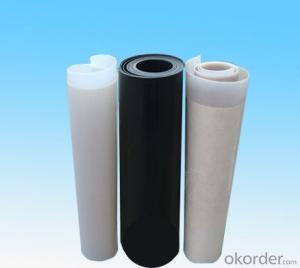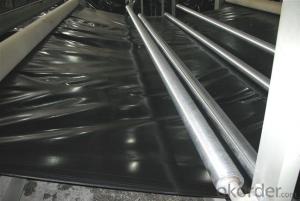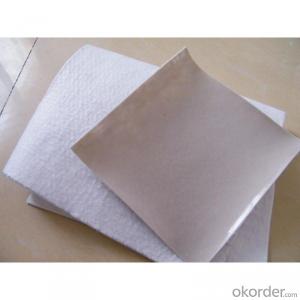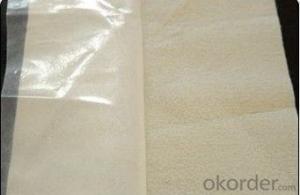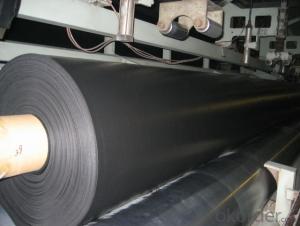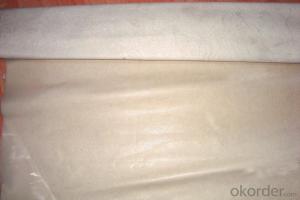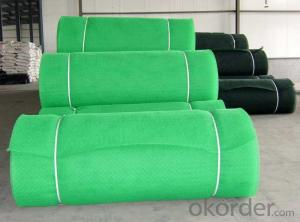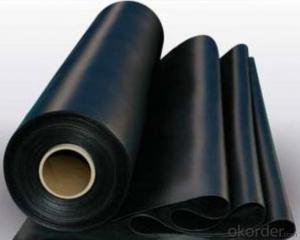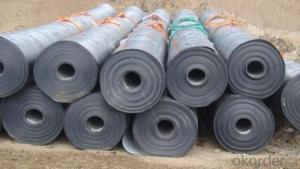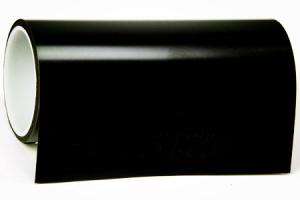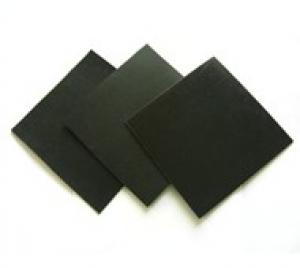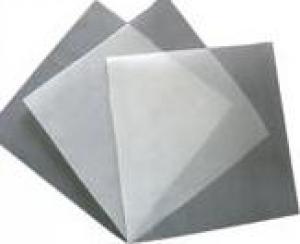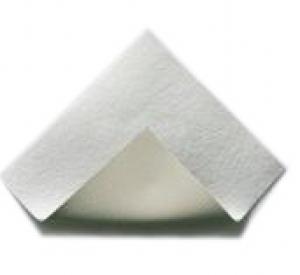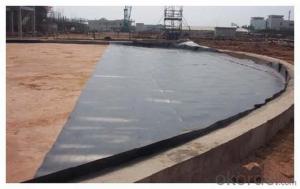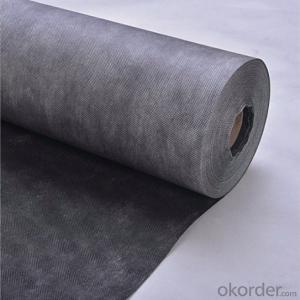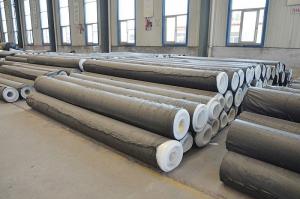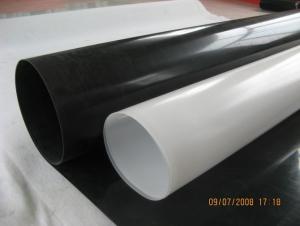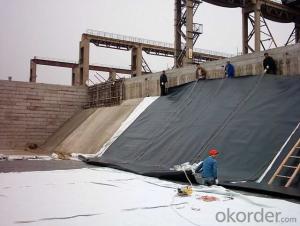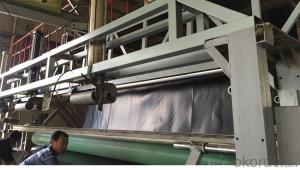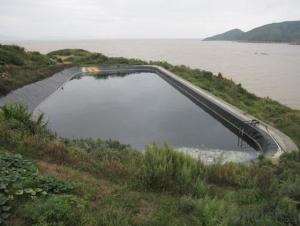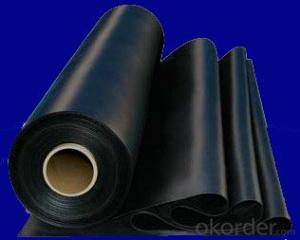2mm HDPE Geomembrane for Pond Liner and Landfill Project
- Loading Port:
- Qingdao
- Payment Terms:
- TT or LC
- Min Order Qty:
- 10000 m²
- Supply Capability:
- 300000 m²/month
OKorder Service Pledge
OKorder Financial Service
You Might Also Like
Description Of HDPE Geomembrane :
Our high density polyethylene (HDPE) geomembranes provide an impermeable barrier against a wide range
of solids and liquids. They exhibit excellent chemical and UV resistance, impermeability, and high yield and
welded seam strengths, which is widely used as the liner.
Main Features of HDPE Geomembrane:
1.Long life, anti-aging, roof material can be more than 20 years, underground can be more than 50 years.
2. Good tensile strength, high elongation.
3. Good high/low temperature flexibility
4.Easy to construct, no pollution.
5. Good anti-corrosive ability, can be used in special area
6.Various colors are available
Specifications of HDPE Geomembrane:
1052963 | Item | Test Value | |||||||
0.75mm | 1.0 mm | 1.25 mm | 1.5 mm | 1.8mm | 2.0mm | 2.5 mm | 3.0mm | ||
1 | Minimum Density(g/cm³) | 0.94 | |||||||
2 | Strength at yield,N/mm | 11 | 15 | 18 | 23 | 27 | 30 | 38 | 45 |
3 | Strength at break ,N/mm | 21 | 28 | 33 | 43 | 51 | 57 | 71 | 85 |
4 | Elongation at yield,% | 13 | |||||||
5 | Elongation at break,% | 700min | |||||||
6 | Tear Resistance N | 93 | 125 | 156 | 187 | 219 | 249 | 311 | 373 |
7 | Puncture Resistance N | 263 | 352 | 440 | 530 | 618 | 703 | 881 | 1059 |
8 | Stress Crack Resistance, hrs | 400 | |||||||
9 | Carbon Black Content, % | 2.0-3.0 | |||||||
Carbon Black Dispersion | 1 or 2 | ||||||||
10 | Standard OTI Min | 100 | |||||||
High Pressure OTI Min | 400 | ||||||||
11 | Impact Cold Crack at -70°C | Pass | |||||||
12 | Water vapor permeability (g.cm/cm2 .s.Pa) | ≤1.0×10-13 | |||||||
13 | Dimensional Stability (%) | ±2 | |||||||
Applications of HDPE Geomembrane:
1.Prevent leakage disposal in waste burying field or waste water or waste dregs disposing field,river bank,lake dam ,mine remainings ,reservior,tunnel,liquid storage ,pool(pit,mine)
2.Preventing leakage in subway ,basement,tunnel ,hole
3.Anti-solt leakage in roadbed and other groundtill
4.The plane direction laying of dam ,the vertical direction laying fou groundtill ,used in the construction fence and waste material field
5.Used in seawater or freshwater feed field
6.Used in groundtill of road,highway ,railway and waterproof layer of swelling clay and wet collapsed loess
Preventing leakage on rooftop.
Images of HDPE Geomembrane :
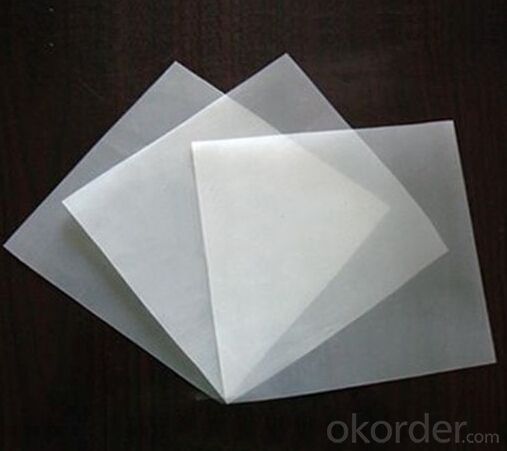
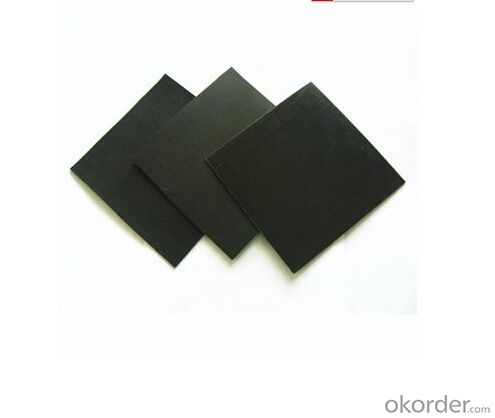
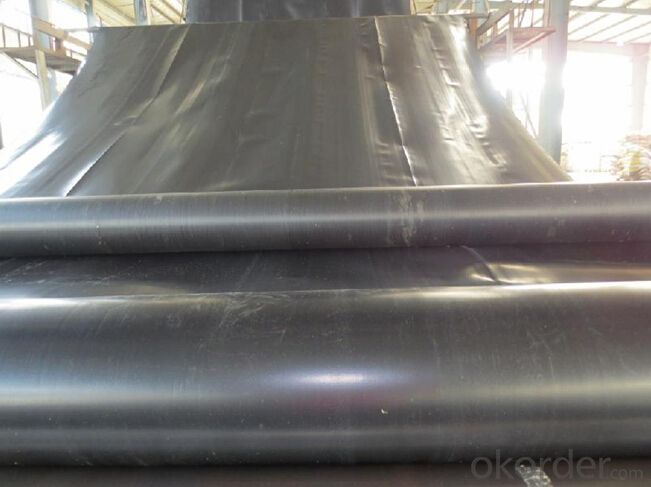
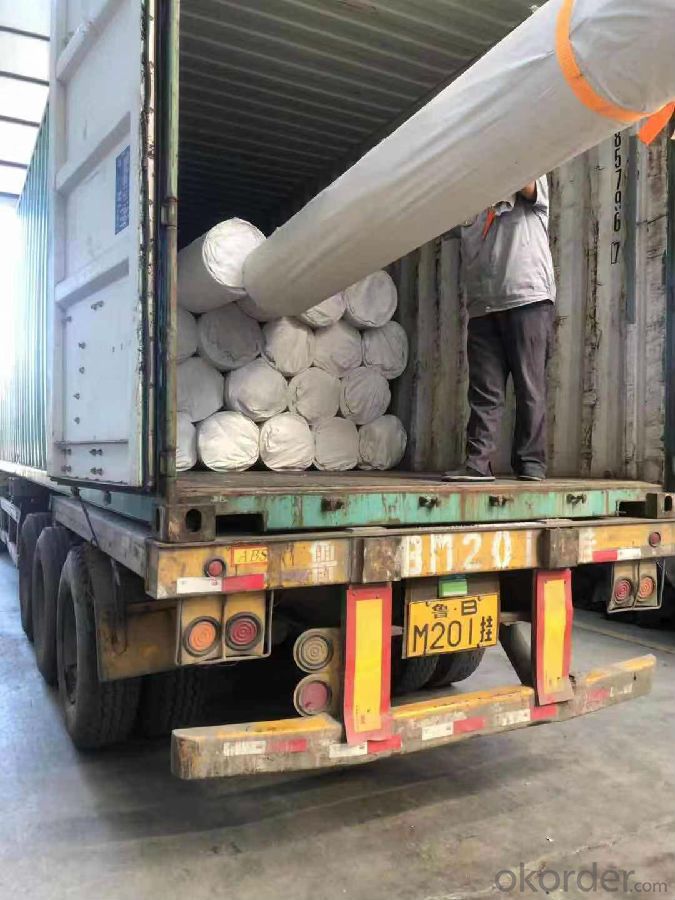
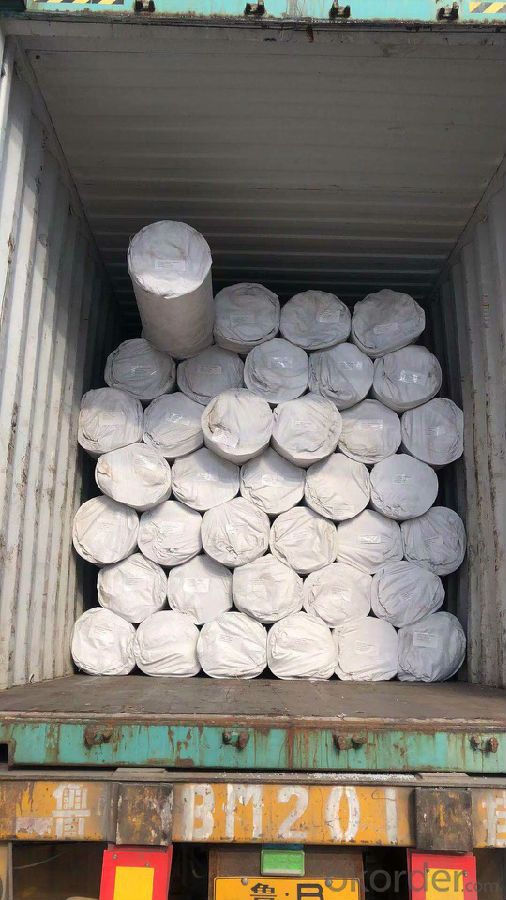
FAQ:
1. Do you supply free samples for customers?
Yes,we will supply free samples for you.Please send your address for us.
2. How Many years experience do you have?
We have been exported to more than 20 countries in the past 15 years.
3. How long do we usually reply your request?
We always reply our customer within 24 hours.
- Q:What's the application technology of woven composite geomembrane?
- Composite geomembrane (composite impermeable membrane) is divided into two types: one is of one fabric and one membrane, and the other is of two fabrics and one membrane. Its width is 4-6cm and weight is 200g. The manufacturing shop of geomembrane covers the area of 1500g/m2. With physical and mechanical properties of high tensil strength, good tear resistance and high bursting strength, the composite geomembrane has many characteristics of high strength, good elongation property, bigger deformation modulus, acid and alkali resistance, corrosion resistance, anti-aging, and good anti-seepage performance. It can meet the civil engineering needs of seepage prevention, insulation, reinforcement and crack control in water?conservancy, municipal administration, construction, transportation, subways, tunnels, and engineering construction. It is often applied to the seepage control of dams and drainage ditches, and anti-pollution treatment of the waste storage.
- Q:Are geomembranes permeable to water?
- No, geomembranes are not permeable to water.
- Q:Build an acre of shallow water lotus root pool, how much money to invest? With the kind of impermeable membrane, anti-seepage membrane how much money a flat
- Professional aquatic impermeable membrane manufacturers to answer your questions, do not know can call, manufacturers guide,
- Q:What are the limitations of geomembranes in high-pressure applications?
- Geomembranes are thin, flexible sheets used for containment of liquids or gases. However, in high-pressure applications, geomembranes have certain limitations. Firstly, they may not possess sufficient strength to withstand the high pressure, leading to potential ruptures or leaks. Additionally, geomembranes may experience significant deformation or stretching under high pressure, compromising their performance and integrity. Moreover, the installation and maintenance of geomembranes in high-pressure environments can be challenging and costly. Therefore, while geomembranes are suitable for various containment applications, their use in high-pressure scenarios requires careful consideration of these limitations.
- Q:What is the difference between the membrane of LGP and BEF?
- As their names suggest, they can be divided according to usage. 1) LGP can guide light. 2) Reflective membrane can reflect the light. 3) The BEF membrane can enhance the light.
- Q:Can geomembranes be used in stormwater management?
- Yes, geomembranes can be used in stormwater management. They are often used as liners for stormwater ponds, detention basins, or other containment systems to prevent the infiltration of pollutants into the ground and protect water quality. Additionally, geomembranes can be used in the construction of stormwater channels, culverts, or pipes to control the flow and direction of stormwater runoff.
- Q:How do geomembranes protect against chemical contamination?
- Geomembranes protect against chemical contamination by serving as a barrier between the chemical substances and the surrounding environment. These synthetic liners are impermeable, preventing any leaching or migration of chemicals into the soil or groundwater. Additionally, geomembranes are resistant to degradation from a wide range of chemicals, ensuring long-term protection against chemical contamination.
- Q:What are the permeability properties of geomembranes?
- Geomembranes are synthetic sheets or membranes that exhibit varying levels of permeability, depending on their composition and design. Generally, geomembranes have low permeability, making them highly effective barriers against the movement of liquids, gases, and other substances. However, the permeability properties of geomembranes can vary depending on factors such as thickness, material composition, and installation techniques. In some cases, geomembranes can be engineered to have specific permeability characteristics to accommodate specific applications, such as allowing controlled flow of liquids or gases. Ultimately, the permeability properties of geomembranes are designed to ensure effective containment and protection against potential leaks or contaminations.
- Q:What are the advantages of using geomembranes in waste containment systems?
- There are several advantages of using geomembranes in waste containment systems. Firstly, geomembranes act as a barrier, preventing the leakage of hazardous substances into the surrounding environment, thus protecting the soil, groundwater, and nearby ecosystems. Additionally, they offer excellent chemical resistance, ensuring the containment of various waste materials without degradation. Geomembranes also have a high tensile strength, making them durable and capable of withstanding mechanical stresses. Moreover, they are flexible and can conform to irregular surfaces, allowing for easy installation and reducing the need for excavation. Overall, the use of geomembranes in waste containment systems provides a reliable and cost-effective solution for managing and preventing environmental contamination.
- Q:Can geomembranes be installed on slopes?
- Yes, geomembranes can be installed on slopes. They are often used as a barrier or liner to prevent water seepage or soil erosion on slopes. The installation process may require additional measures to ensure proper anchoring and stability on the inclined surface.
1. Manufacturer Overview |
|
|---|---|
| Location | |
| Year Established | |
| Annual Output Value | |
| Main Markets | |
| Company Certifications | |
2. Manufacturer Certificates |
|
|---|---|
| a) Certification Name | |
| Range | |
| Reference | |
| Validity Period | |
3. Manufacturer Capability |
|
|---|---|
| a)Trade Capacity | |
| Nearest Port | |
| Export Percentage | |
| No.of Employees in Trade Department | |
| Language Spoken: | |
| b)Factory Information | |
| Factory Size: | |
| No. of Production Lines | |
| Contract Manufacturing | |
| Product Price Range | |
Send your message to us
2mm HDPE Geomembrane for Pond Liner and Landfill Project
- Loading Port:
- Qingdao
- Payment Terms:
- TT or LC
- Min Order Qty:
- 10000 m²
- Supply Capability:
- 300000 m²/month
OKorder Service Pledge
OKorder Financial Service
Similar products
New products
Hot products
Hot Searches
Related keywords
